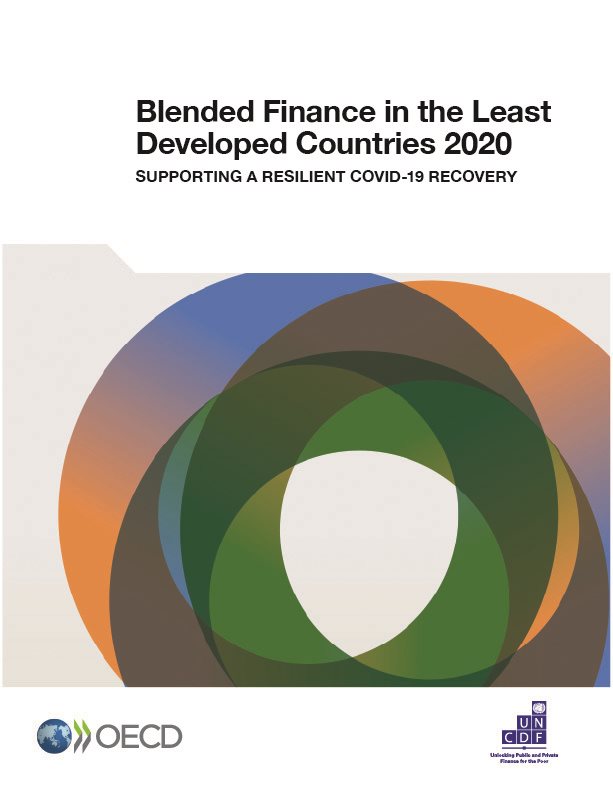Addressing the “Missing Middle” Challenge in Least Developed Countries

Guest Contribution courtesy of the "Blended Finance in the Least Developed Countries 2020" Publication
 Anders Berlin is the Director of UNCDF’s Least Developed Countries Investment Platform, where he manages financial support of SMEs, small infrastructure projects and financial service providers.
Anders Berlin is the Director of UNCDF’s Least Developed Countries Investment Platform, where he manages financial support of SMEs, small infrastructure projects and financial service providers.

Abdul-Rahman Lediju is an Investment Specialist for UNCDF, where he specialises as an Investment Adviser and Risk Manager for the LDCs Investment Platform.
Tags
The COVID-19 crisis, which has prompted national lockdowns, social distancing guidelines and disrupted regional and global value chains, has forced many businesses to endure a significant slowdown or stoppage of economic activities.
In higher-income economies, businesses can apply for stimulus support to manage these unprecedented circumstances. In more vulnerable markets, such as the LDCs, limited fiscal capacity makes such options difficult, thereby risking the suspension and extinction of many businesses, especially SMEs. This can have negative knock-on effects on unemployment levels, social unrest, conflict and forced migration.
Achieving the SDGs, recovering from the COVID-19 crisis and rebuilding inclusive and resilient economies will be virtually impossible for any LDC without SMEs. SMEs play a major role in formal employment (responsible for seven out of every ten new jobs created in emerging markets), economic growth (contributing up to 40% of emerging-market GDP), and innovation, creating more resilient and competitive economies (World Bank Group, 2017[25]). They deliver essential goods and services that allow communities to further grow and thrive. With population trends predicting that over 600 million new jobs will be needed to absorb a growing labour force, SMEs will be the engine for the jobs of the future.
These enterprises often do not receive the right type of financial solutions to grow. They are usually too large to receive financing from microfinance institutions, but simultaneously below the radar for classic local commercial banks, DFIs and impact investors. This is what is commonly referred to as the “missing middle” challenge.
There are three drivers that contribute to the unfortunate persistence of the missing middle: transaction costs, risk perception and investment readiness.
- Transaction costs. The costs to appraise and monitor investments for an SME are often the same as for larger transactions. Since the returns generated from any transaction are directly connected to transaction size, it follows that it is usually more expensive to handle SME deals, especially in contrast to larger enterprises.
- Risk perception. SMEs generally lack the attributes that conservative financiers like to see. These features include collateral options to offer as security, key founders having enough “skin in the game”, profitability trends, business life, and investor or bank investment experience in the sector or region in question. The lack of these qualities may be compounded by the financier’s lack of investment experience, or lack of data, in the sector or region in question, which leads to further uncertainty in evaluating risk. Moreover, commercial financiers lack the risk appetite to design tailored investment solutions at large scale to overcome these traditional constraints. Many SMEs therefore rely heavily on friends and family, as well as community-based informal lenders who exploit the absence of formal solutions by providing tougher terms and pricing (Runde, Yayboke and Ramanujam, 2019[26]).
- Investment readiness. SMEs sometimes lack the fluency to engage with local commercial banks and investors in a way that can yield positive results. For example, sustained engagement with a prudent investor or bank requires the ability to build (and maintain) robust financial models, and to design strategic business plans that include a clear revenue model description, market and competition analysis, customer segmentation details, detailed strategies to finance growth, and a logical sales strategy to acquire and maintain customers.
Solving a problem as complex as the missing middle financing gap, especially during a pandemic, requires collective action. It is well understood that public stakeholders alone, acting through ODA and domestic national fiscal plans, cannot generate enough resource flows to meet this development challenge (Runde, Yayboke and Ramanujam, 2019[26]).
One solution would be to establish investment platforms or facilities that take “on higher risk” and invest in “smaller projects with growth potential and longer investment horizons”. Such a platform or facility should take into account that SMEs need different financial solutions at various stages of their lives – start-up, growth (early and mid) and expansion (Runde, Yayboke and Ramanujam, 2019[26]). UNCDF, for example, through its LDC Investment Platform, manages a portfolio of loans and guarantees on its balance sheet, focused on nurturing early-stage missing middle enterprises and projects in LDCs. By providing catalytic capital and technical assistance, we help to de-risk these businesses and enable them to access additional blended and commercial capital.
UNCDF’s finance capabilities include offering solutions that can respond in terms of pricing (concessionary terms), grace periods (up to 36 months), ranking (UNCDF can invest in any position in the investment target’s debt capital structure), risk coverage (subordinated and pari passu guarantees) and tenors (12 months to 15 years). Moreover, UNCDF invests with systemic goals in mind – either to demonstrate and build market viability, to unlock the ability of other financiers to join in, or both. The LDC Investment Platform is 100% backed by grant donations and the revolving use of the funds means that a relatively small amount of capital has the potential to support numerous businesses and amplify development impacts over time and where the support is needed most.
Another complementary solution to tackling the missing middle financing gap is to pool public and private funding in structured blended finance vehicles that offer flexible, risk-tolerant capital solutions to SMEs that are otherwise generally not available from existing funds or financiers (Johnston, 2019[27]). In UNCDF’s experience of working alongside Bamboo Capital Partners on the missing-middle-focused BUILD Fund, key considerations include mobilising the right proportion of public versus private capital, and implementing the right workflows to significantly support the missing middle in a cost-efficient (and therefore scalable) way (UNCDF, 2020[28]).
Paradoxically, the higher the proportion of public capital, the more risk-tolerant and flexible the blended finance vehicle can be. Striking the right balance is key in this regard, especially given ODA resource scarcity. In the case of the BUILD Fund, several layers (or “tranches”) of capital will be used to invest in the same future portfolio of SMEs, but with different risk and return features for the ultimate investors dependent on the tranche.
If there is a loss, the first-loss (or “catalytic”) tranche will be the first to bear it, thereby protecting the other layers of investors. The first-loss layer appeals to public actors who can use their dollars beyond grant-making to support their development objectives. If the BUILD Fund measures risk properly, the initial dollar invested can grow, be recycled for future investments, and further amplify development gains. The upper investment layers are designed to appeal to private actors. These potential investors would receive an annual, reasonable return, and would also be protected by a significant first loss layer (20% protection) in the event of losses in the underlying investment portfolio, including foreign exchange losses. In other words, the portfolio would have to effectively lose one-fifth of its value before a private investor’s initial capital is affected. This represents a significant cushion to support the crowding in and blending of different sources of capital to address the missing middle challenge.
Regarding workflows, UNCDF will leverage its in-house footprint, development expertise, technical assistance resources, and increased investment origination and due diligence capacity to develop a pipeline of investable businesses for BUILD. This will drive down some of the costs that would otherwise be fully borne by Bamboo Capital Partners and the vehicle itself.
The pandemic has reminded us that our social, public health and economic systems are intimately interconnected. SMEs, which navigate the missing middle challenge daily, are not likely to be rescued by government stimulus packages to remain resilient through the crisis. It is imperative to look to risk-tolerant facilities and blended finance to support these businesses, their customers, suppliers and their workers in the poorest and most vulnerable communities around the world.